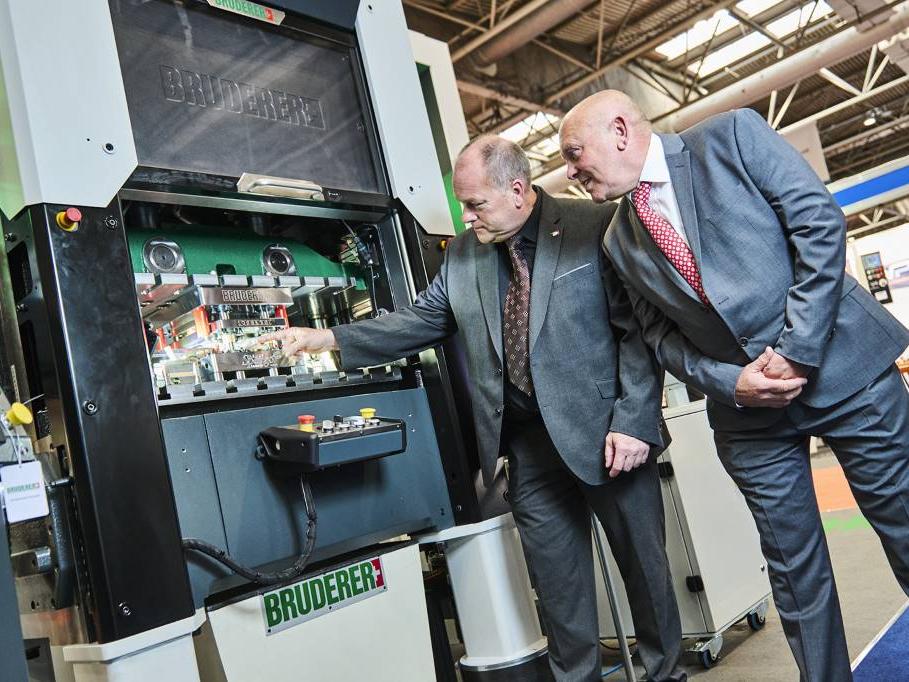New slider is set to impress

Unveiled at EMO Hannover and taking pride of place at the recent Star GB open house was the SX-38, the company’s latest addition to its 38mm diameter sliding head range.
The company is looking to officially bring the new model to the marketplace at the end of Q1 in 2020.
Essentially, there are two types: Type A features a quick changeover 10 station turret allowing rapid set-ups with existing Star toolholders.
The Type B however incorporates a single position tool drive mechanism, similar to a BMT type in fact. Only one station is live when the powered tools are running. Star’s operations manager Alec Warner believes the Type A will be the most popular with UK customers.
The SX-38 is a three channel machine with a total of 12 axes. Path three refers to the turret which has its own Z-axis, enabling users can take advantage of Star’s ‘superposition mode machining’.
This means you can be machining one feature on a part with the platen, and the turret ‘follows’ the bar whilst machining a different feature in a different location. This can have a significant impact on reducing cycle times.
There are four stations on the platen and a programmable B-axis which features a hydraulic clamp for locking in position and 135° of swing for drilling angled holes and processing angled features on both the main and sub-spindles.
Both SX-38 variants have been designed with improved workability and operability in mind. The layout of the toolpost in conjunction with a slanting bed frame means accessibility is excellent from both a set-up and maintenance perspective.
“The 60° slanting bed on the SX-38 is actually a deliberate design feature,” Alec Warner advises. “In sliding head factories space is often at a premium. At 2,955 x 1,430 x 1,975mm (WxDxH) the SX-38 is a little taller and longer than some of our models but the slanting bed means we’ve been able to reduce the depth.
“When you compare it to our ST-38 for example, which has a 45° bed, the more angular slant means everything is within easy reach and closer to the operator. Overall it’s a very compact machine and with its triple door arrangement that opens from both sides, accessibility is a real strong point.”
Star’s 38mm sliding head range is already extensive, but Mr Warner believes the new SX-38 will sit between the existing SV and ST series’. Although not specifically designed to replace other models, it does inherit many of their benefits.
“The SX-38 takes many of the strengths of our other 38mm machines and combines them in a convenient package,” he explains. “The guide bush/non-guide bush, 5-axis capability of the SR range; the slanting bed and turret arrangement of the ST series; and also the rear mounted eight station platen for simultaneous independent working of the SV series are all featured on the SX-38.”
It goes without saying that the SX-38 can be operated in guide bush/non-guide bush modes and it’s a simple process to switch between the two. The former facilitates the high-precision machining of long workpieces such as motor shafts and the latter enables the processing of shorter components whilst minimising waste.
In non-guide bush operation however, an evolutionary feature of the SX-38 is its spindle sleeve guideway structure which secures the rigidity of the main spindle by supporting the slide guideway surface close to the machining point, reducing the cutting load generated from machining. The result is greater support and rigidity.
“The inherent flexibility of the SX-38 means it’ll be ideal for a variety of applications,” Mr Warner advises. “With its full 5-axis capability and wide array of turret/tool positions it’ll work well on high precision medical parts for example and a 320mm of stroke on head one means it’ll be effective on long shafts with minimal re-chucking,”
The SX-38 can accommodate bar diameters up to 38mm and 42mm in non-guide bush mode. A number of hardware options are available such as bar feeders, swarf conveyors, mist extraction, high pressure coolant as well as software enhancements such as Star’s High Frequency Turning (HFT).
The new model will be available from Star GB at the end of the first quarter in 2020: “Just in time for MACH,” Mr Warner enthuses.
Star GB www.stargb.com














